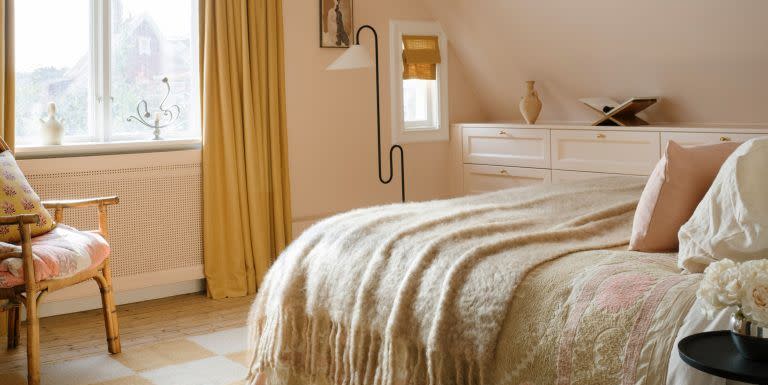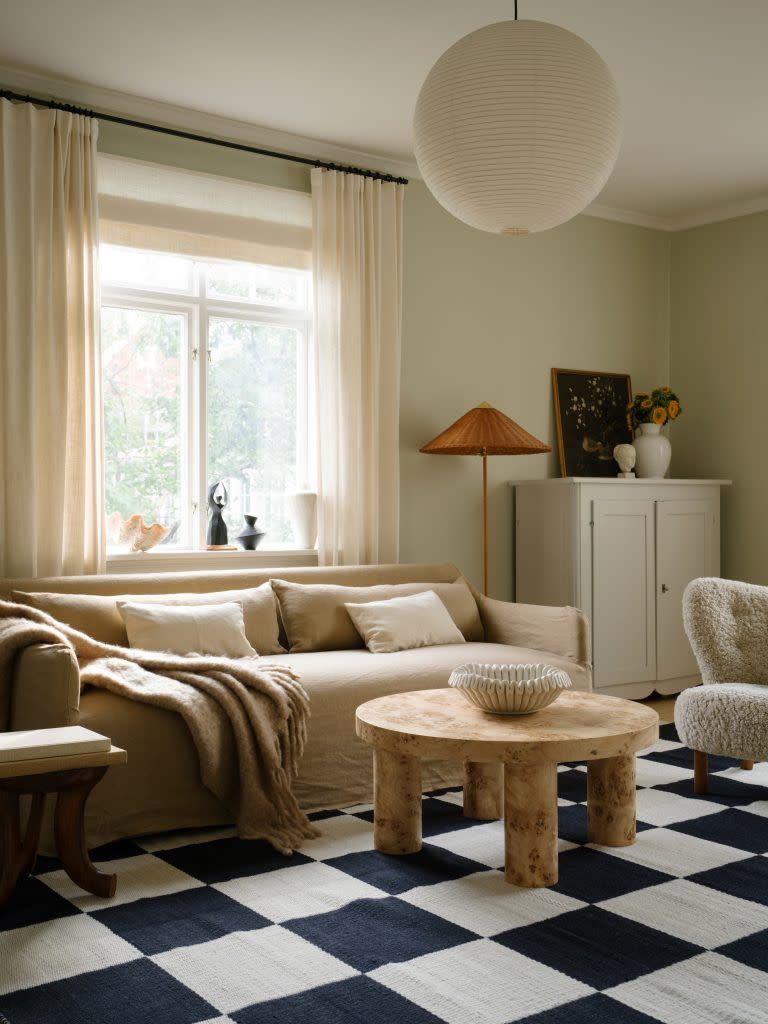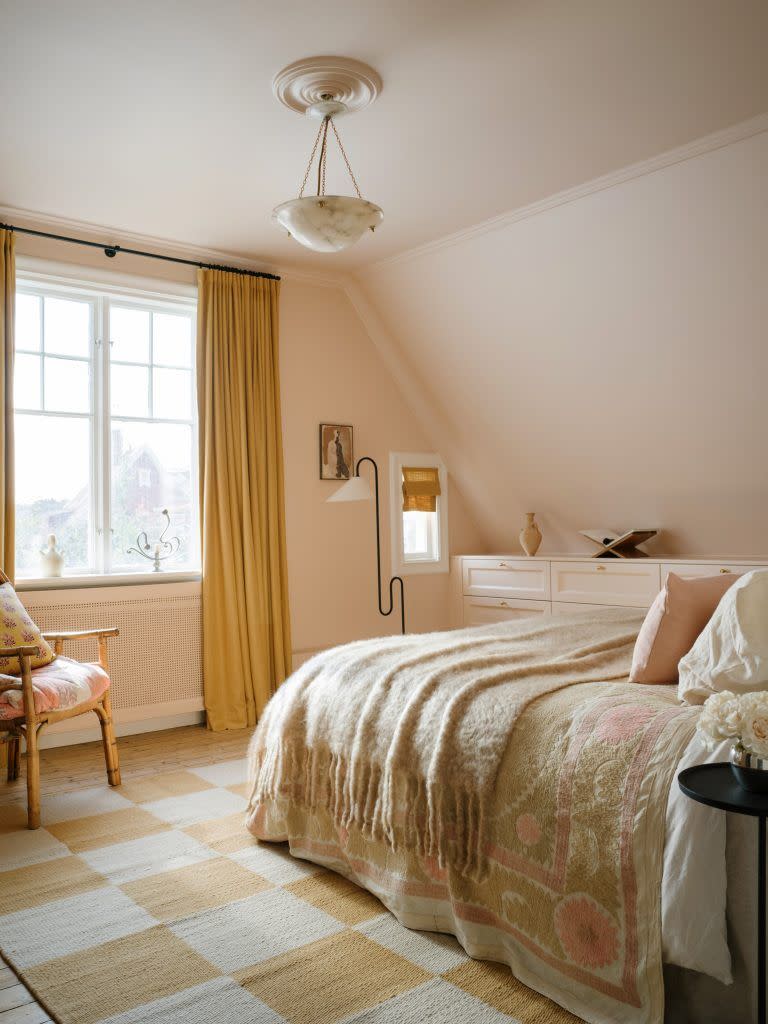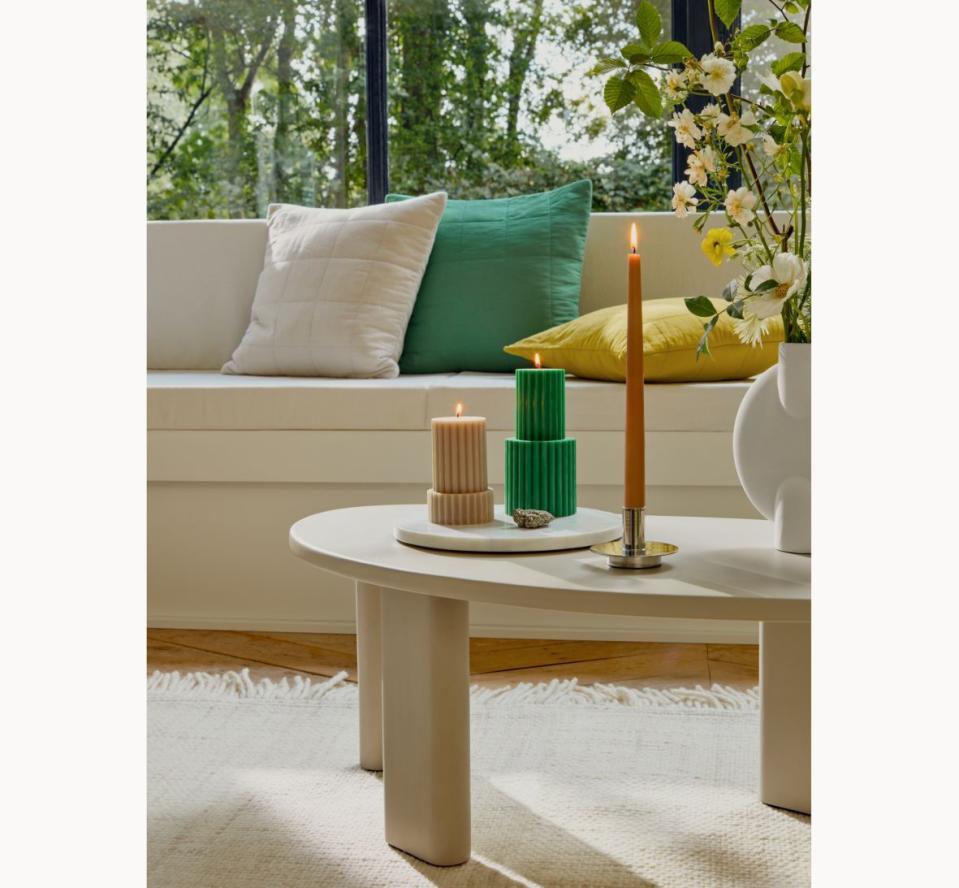10 tips for creating a calm, slow living home

Slow living is a growing trend that shrugs off fast-paced lifestyles in favour of a more relaxed pace of existence.
Not only does it promote the idea of ridding ourselves of stress in our day-to-day lives and finding joy in simple pleasures, but it also extends to creating a relaxing interior that encourages personal joy, aka the slow living home.
What is slow living?
At its core, slow living encourages us to take a calmer approach to life, instead of striving to be constantly busy. It also encourages us to celebrate the little things in life, whether that’s the sun shining or a good cup of coffee. Slow living is all about moments or actions that bring us joy or relieve us of stress. Mindfulness is important too, and slow living seeks to find connections with others and encourages us to feel present in our surroundings.
What is a slow living home?
Think of slow living at home as a lifestyle, rather than a trend. A slow living home isn't about creating an Instagram-worthy look, but rather a space that works for you in terms of practicality, enjoyment and mindfulness. You should aim to craft a space in which you can retreat from the hustle and bustle of the outside world, prioritising relaxation and enjoyment. It's also important to make your home reflect your personality as an individual, so you should design it to complement your lifestyle and needs.
Your home should be a retreat from daily life – a space where you can take the pressure off. By creating a calm environment within your interior, you encourage your body and mind to relax.
Nature-inspired elements are a great place to start, as Michelle Collins, co-founder and creative director at Green Lili, explains: 'Spaces with muted colour schemes instantly provide a relaxing environment. Think natural furnishings, light tones, and nature's colours.'

If you need inspiration, take a look at biophilic design. It's shown to improve brain function as well as increase both physical and mental health. Not only does it promote wellbeing, but it also lowers stress and enhances creativity.
If you can't get cosy at home, where can you? No one does cosiness quite like the Danish and their concept of hygge is explained best by Visit Denmark: 'In essence, hygge means creating a warm atmosphere and enjoying the good things in life with good people. The warm glow of candlelight is hygge. Cosying up with a loved one for a movie – that's hygge, too.'
To bring hygge to your home, Michelle suggests the following: 'Opt for earthy palettes that connect you to the outdoors, light candles, and get cosy with blankets and cushions. Slow down and be mindful, savouring the present moment.'
We could always use more sunlight, especially in the UK. Exposure to daylight naturally boosts our wellbeing and mood. Plus, it makes us feel more awake and energised. In the home, natural light ensures a room looks lighter and brighter and also gives the feeling of more space.
Collette Toman, interior stylist at Make My Blinds, adds: 'Natural light can help with restful sleep and is essential to creating a relaxing and welcoming space, as well as making your rooms more spacious where possible. Installing Venetian or wooden blinds is a perfect way to control any natural light entering your home. These blinds will help maintain your privacy, allowing you to take the day at your own pace, with the option to block out the light to optimise the space for sleeping.'
Michelle adds: 'Open the curtains during the day and place mirrors opposite sun-facing windows. Consider your lighting options and choose an ambience that soothes the space and the soul.'
Read our top tips for more ways to increase natural light in your home.
Layering textures feeds back into the concept of hygge, and the best way to get the most impact (in terms of depth and cosiness) is to contrast different textures with one another. Pair deep pile rugs with smooth, but still sumptuously soft velvet blankets, and juxtapose jute pouffes with faux sheepskin cushions.
Amy Wilson, creative director at 247 Blinds and 247 Curtains, says: 'Contrasting different textures is a subtle, yet impactful way of developing an interior scheme that leans into more mindful living. Texture gives the room visual weight, adds interest with layers and creates an inviting and cosy ambience.

'Looking for textures with different weights and appearance is key so look for sheepskins on wooden floors, linen curtains draped on wool carpets or baskets piled high with a variety of blankets.
'If you have lots of wooden furniture, you might want to consider how cotton and linens can create a softer surrounding. Adding soft Roman blinds or linen table runners to wooden furnishings can visually soften harder surfaces. Natural materials will bring an instant feeling of calm as they evoke our natural environment and the wellbeing power of the great outdoors.'
'Technology is one of the biggest distractions in the home – and whilst it can be incredibly useful to our lives, it can also take up a lot of our time,' says Amy. 'Swap out your morning scroll for another hobby or activity that you enjoy – and create a space to do so. Whether that's a reading nook or musical corner, you should take any devices out of this space and devote it solely to mindful practice.'
It's a universal truth that it's impossible to feel relaxed amid mess or clutter. It raises our stress levels, so it's not only detrimental to both relaxation and sleep but also hinders creativity. An organised environment is a calm environment and also highlights the aspects of your home you love the most.
'Mess equals stress,' says Michelle. 'Clear out any clutter and unnecessary items from your home. Discard anything that doesn't serve a purpose in your life in a sustainable way, and donate or sell the rest.'
Amy agrees: 'I'd encourage anyone who wants to embrace the slow living movement to take the time to assess what you need in your home. Try to stick to the mantra "buy less but invest" (in higher quality items). Spend your money wisely on key pieces of furniture that you know you’ll love for years to come and shop around.'
'Instead of depending on a single, harsh light source, blend ambient, task, and accent lighting to establish a warm and inviting atmosphere,' says Colette.
'Utilise floor lamps, table lamps, and overhead fixtures strategically to balance lighting across different areas of your home. This not only adds a snug ambience but also offers flexibility to adjust lighting according to various activities and moods. By implementing layered lighting in your home, you are crafting an environment that fosters relaxation and mindfulness.'
Think about your daily routine, lifestyle and what brings you joy. Then adjust your home to work best for you, prioritising functionality and comfort.
'Keep the way you want your space to feel and be used at the forefront of the design process when making changes to your home instead of following a trend or style,' says Michelle.
Do you prefer an understated environment or one full of texture and pattern? Do you love to entertain guests or prefer your home to be your quiet place? What activities or hobbies would you like to have space for? Is there a room you naturally gravitate towards? Once you identify your needs and wants, you can make your home fit them.
It's not enough to create a cosy corner, you also need to prioritise silence. After all, you can be tucked up and still be disturbed by noise inside or outside the home: the creak of floorboards, passing traffic and the gurgle of the washing machine. Think about creating spaces that not only insulate you in terms of snugness, but in doing so, absorb excess sound.

'This is not just about creating a room or nook to escape to for some peace, it's about integrating features within the home that absorb sound and offer a more relaxed environment,' says Amy. 'This is particularly key if you have wood flooring or high ceilings and big, open spaces.
'Choose soft furnishings carefully and make sure you have enough soft materials in every room to absorb noise – it's amazing what a pair of floor-length curtains or a Roman blind can do to soften a room. The best materials for sound absorption tend to be lighter, softer and more porous, like cotton and wool, so consider this with every piece of furniture and decor that you buy.'
Natural elements are always a great choice when it comes to creating a slow living home. It couldn't be easier to do, either.
'Bring the outdoors inside by incorporating plants and natural elements into your home decor,' suggests Colette. 'Consider adding a variety of indoor plants to different rooms, not only for their aesthetic appeal but also for the health benefits they offer.
'Natural elements like wood, stone, and rattan can be integrated into furniture and decor items, creating a harmonious connection with nature. Incorporating plants and natural elements encourages a more intentional and mindful approach to home decorating, fostering a deeper connection with the environment.'
Follow House Beautiful on TikTok and Instagram.
You Might Also Like



